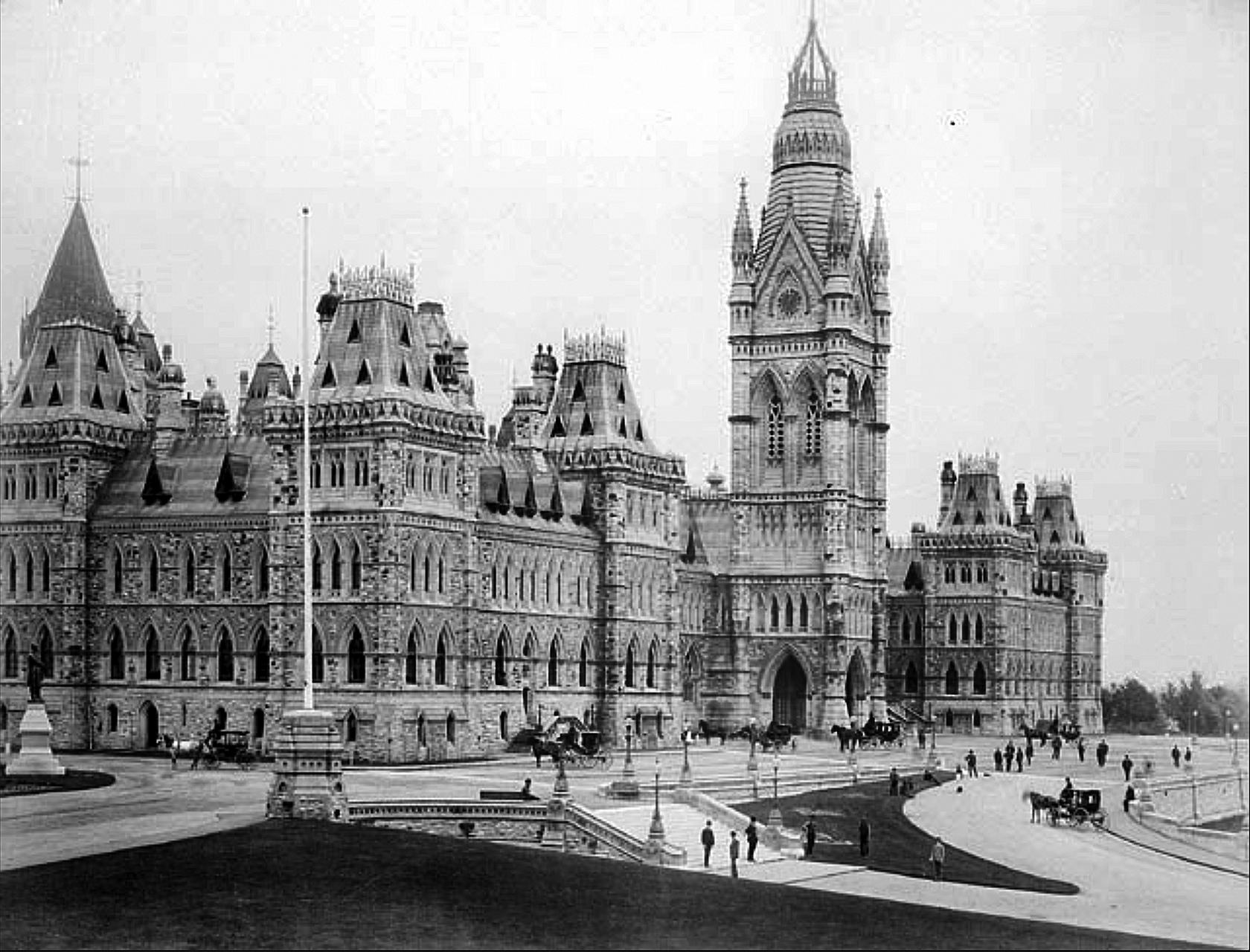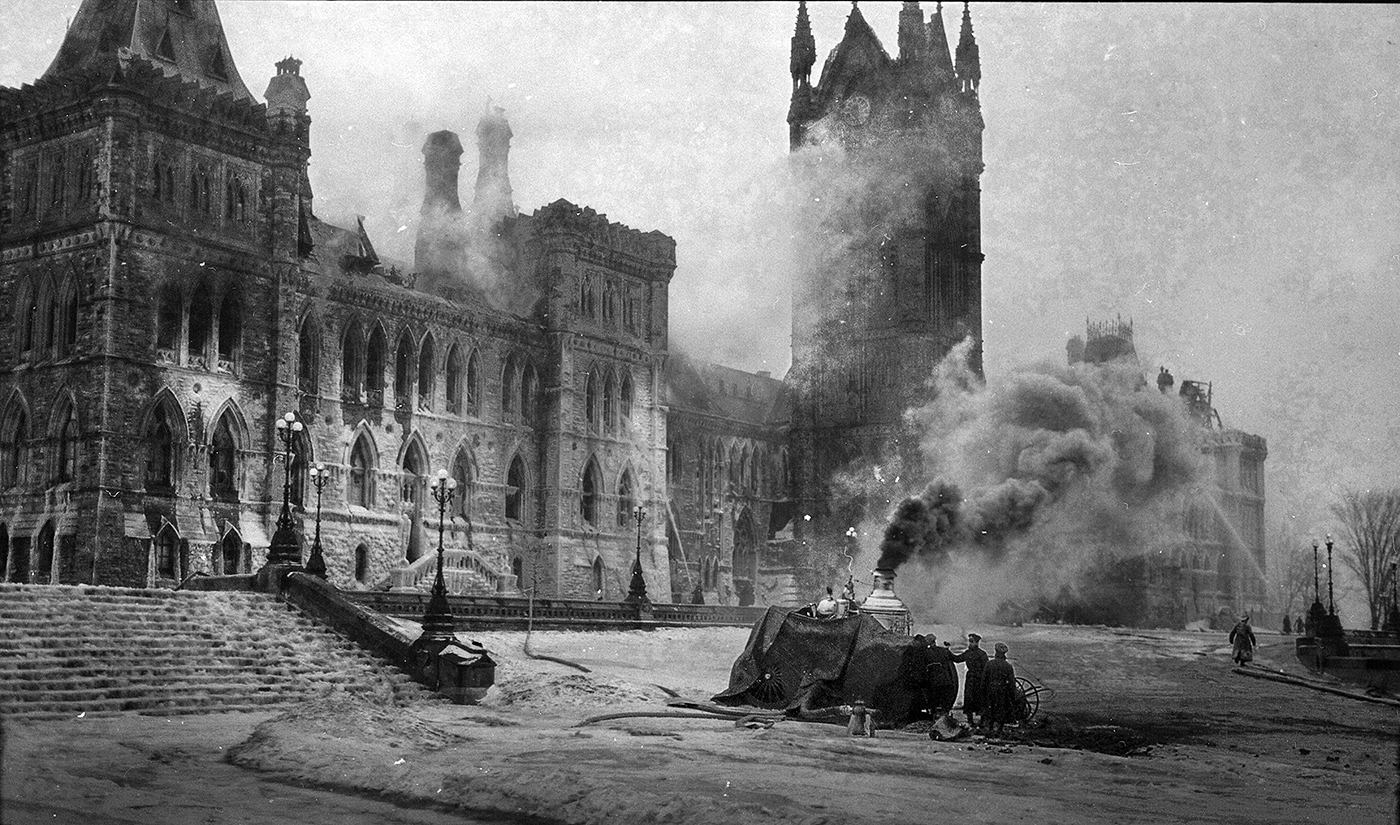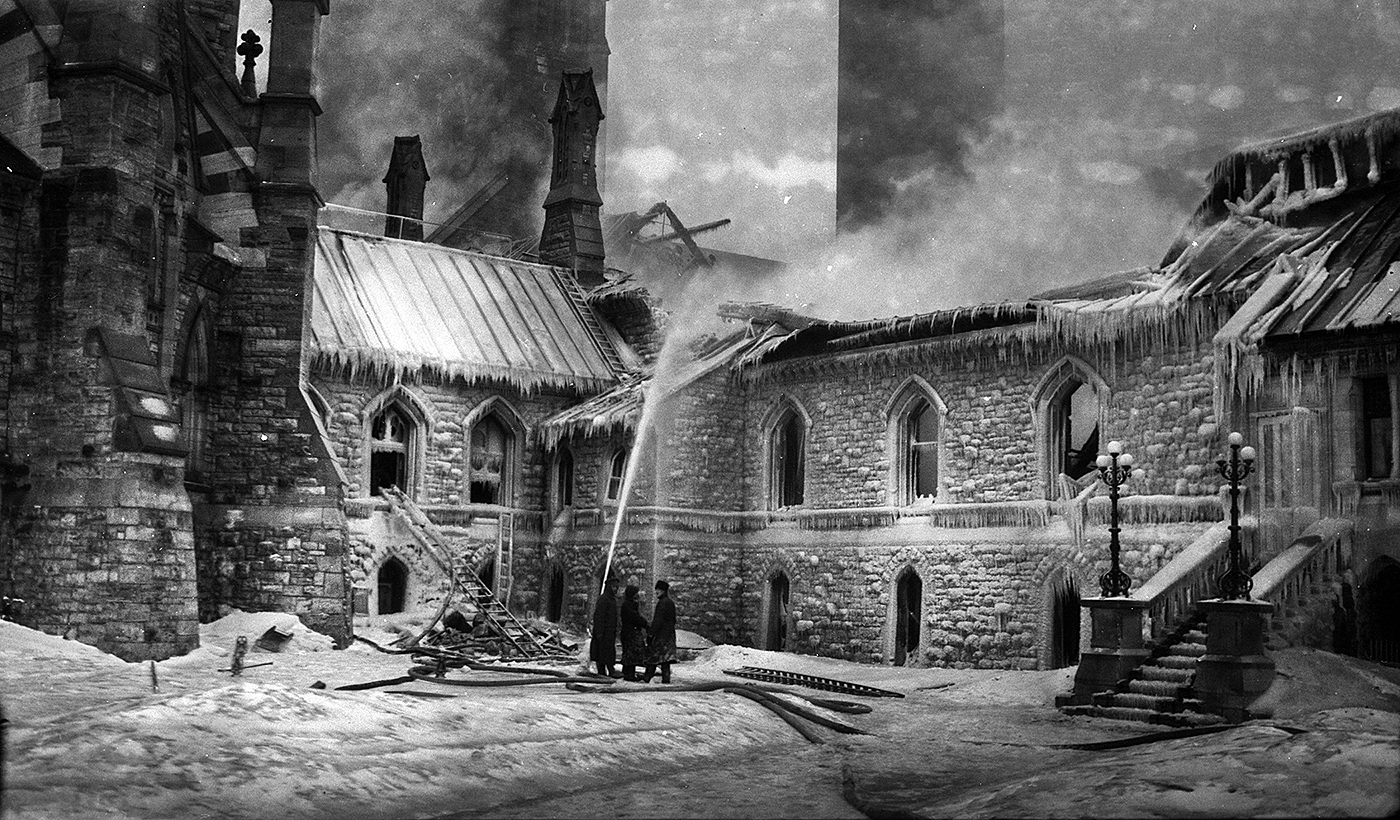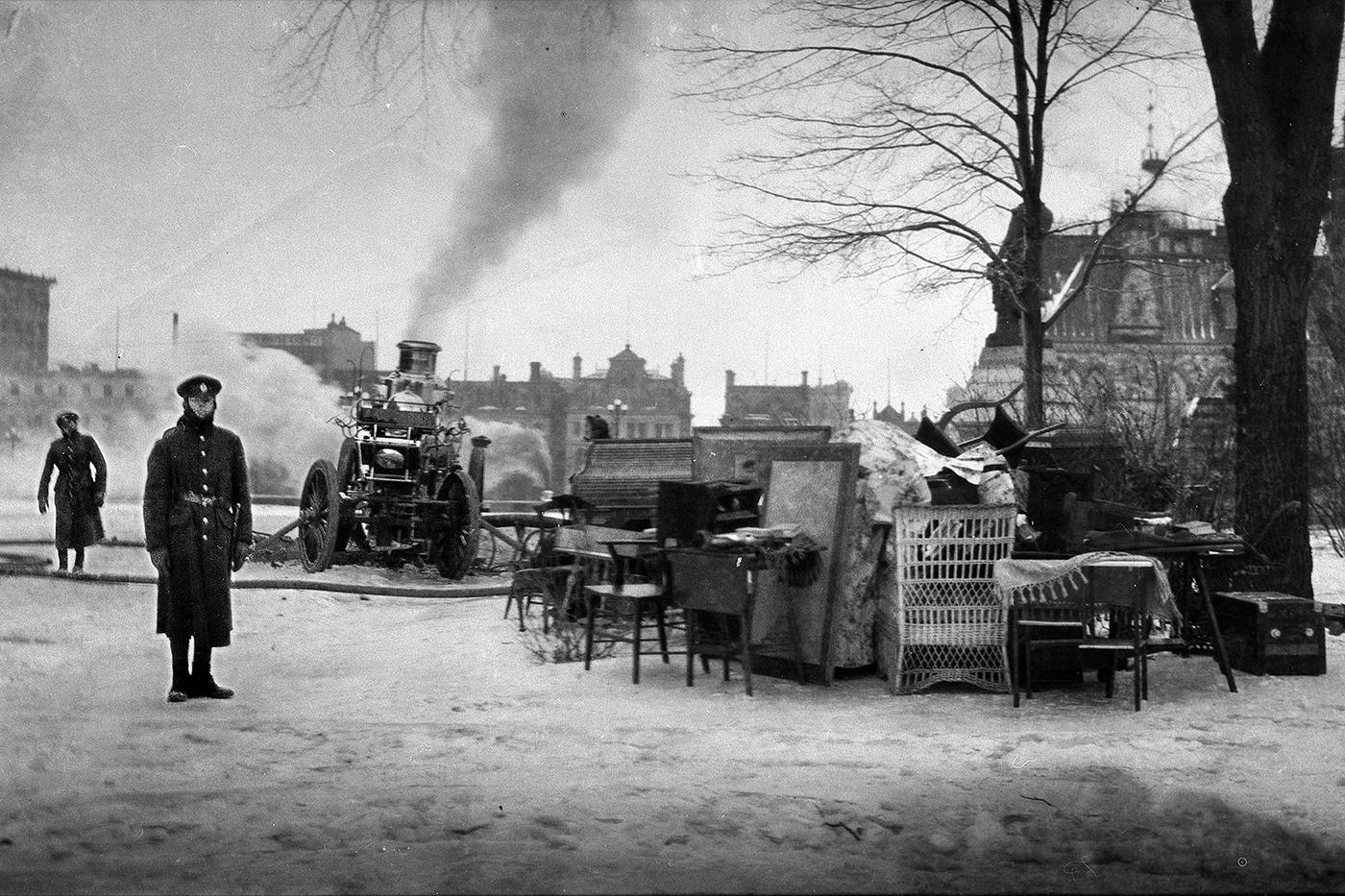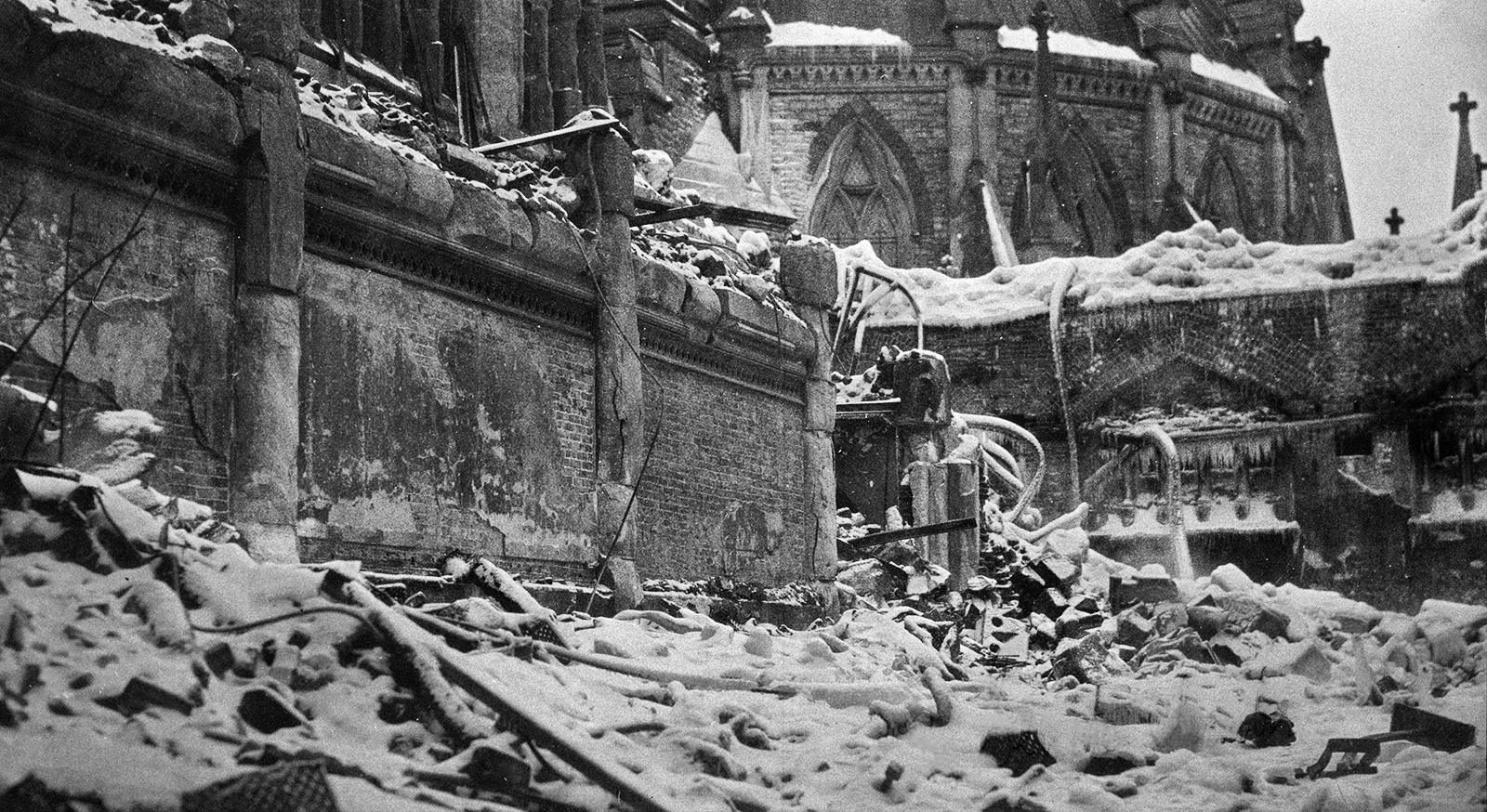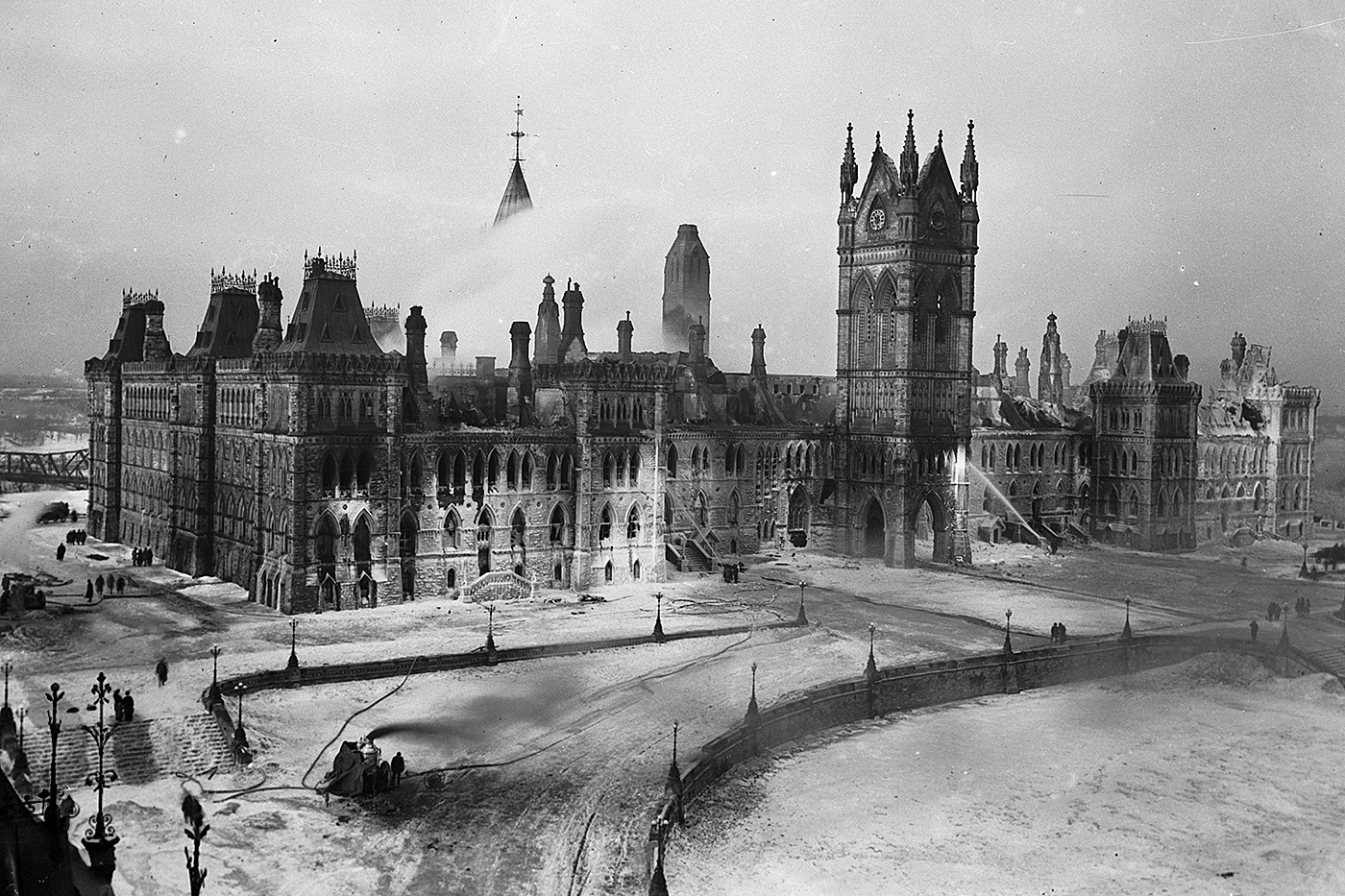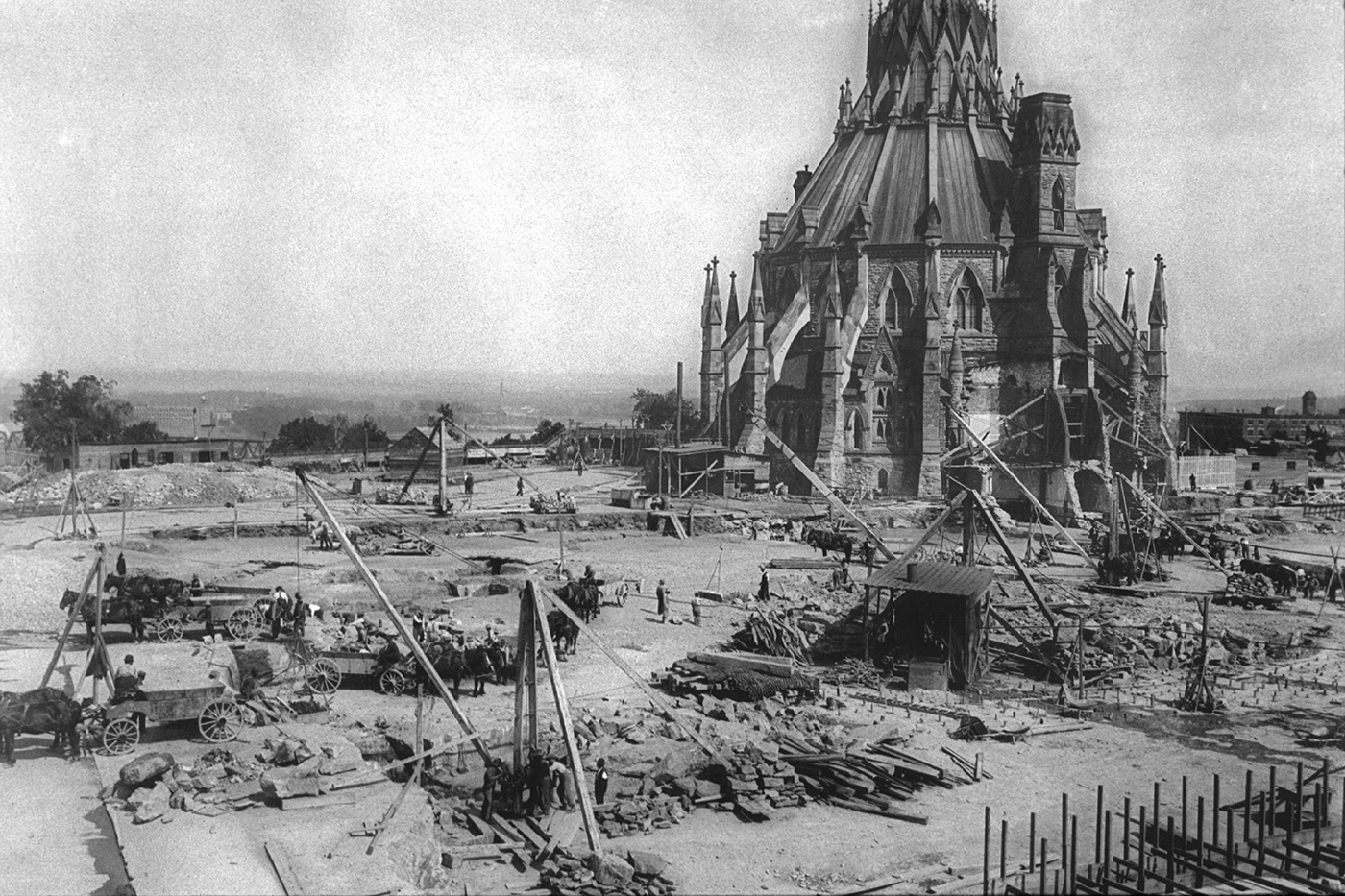Disaster and Determination: The heroes of the 1916 Parliament Hill fire

In February 2019, the Senate moved to the Senate of Canada Building, a former train station built in 1912. The Senate will occupy this temporary location while Parliament’s Centre Block — the Senate’s permanent home — is rehabilitated.
Although Centre Block is shuttered for rehabilitation work, Canadians can still experience its art and architecture through the Senate’s immersive virtual tour.
When the precursor to today’s Centre Block went up in flames the night of February 3, 1916, it dealt the country an existential blow.
Seven people had died. Parliament was homeless. Thousands of historical records, along with parliamentary treasures dating back to the early 1800s, were destroyed. All this at a time when Canada had sacrificed thousands of its young men to a grinding war that showed no signs of ending.
Within the space of three hours, the country had seemingly lost everything — its symbols of nationhood, its security, its confidence, its sense of identity.
“It was one of the darkest times in Canadian history,” said Ottawa lawyer and historian Mark Bourrie, author of Canada’s Parliament Buildings. “The world everyone knew was in shambles.”
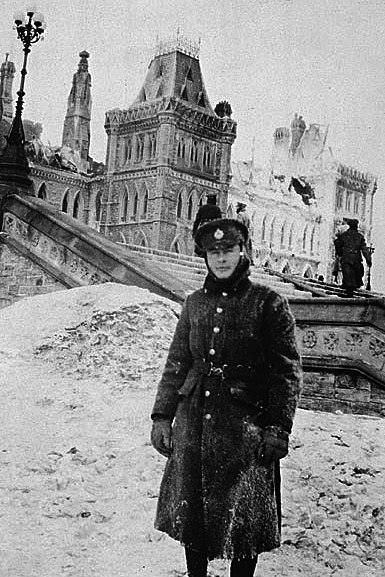
Bravery, sacrifice and resilience
But in the middle of the chaos and destruction, stories of bravery, sacrifice and resilience played out.
The heroes of the 1916 blaze, who risked their lives to rescue colleagues and salvage what they could from the building, included firefighters, police officers and soldiers. There were also heroes among the parliamentary rank and file, including clerks, pages, senior officials, librarians and maintenance staff.
The fire started shortly before 9 p.m. Francis Glass, a Nova Scotia MP, was in the Commons Reading Room when he spotted flames. He called for help and a police constable rushed in to douse the blaze with a fire extinguisher. Instead, the spray scattered embers everywhere, kindling newspapers hanging from dowels along the walls.
“The room was a breeding ground for fire,” House of Commons Curator Johanna Mizgala said. “It was lined with freshly varnished wood panelling, with newspapers and magazines everywhere.”
The alarm sounded at 8:57 p.m. Firefighters stationed on the Hill were on the scene within three minutes. Other Ottawa firefighting divisions soon responded, joined by soldiers training at Lansdowne Park.
But the fire was unstoppable. Flames burst out of the Reading Room and began to spread through the building, in those days a warren of small rooms joined by narrow corridors lined with white pine.
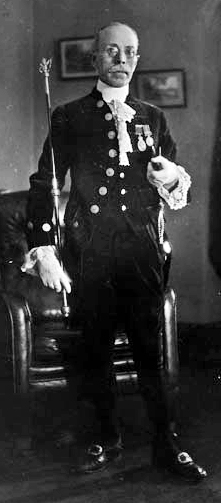
“The hallways leading to both chambers had wooden cubby holes where people hung their fur hats and coats,” Ms. Mizgala said. “You’re talking about a tinder box.”
Mr. Glass shouted a warning to his colleagues just as flames burst into the House of Commons, where 20 MPs were attending a late-night session. The MPs stumbled out of the Chamber through choking clouds of smoke.
The fire took another hour and a half to reach the Senate, giving staff at the east end of the building time to mount a hectic salvage operation. Under the direction of Gentleman Usher of the Black Rod Ernest Chambers, a lieutenant colonel in the army, Senate staff rescued what they could from the approaching flames.
“They went into bucket-brigade mode,” Dr. Bourrie said, “grabbing what they could and just throwing it out the doors.”
Whatever could be rescued was heaped in the snow, including furniture, books, brass and silver ornaments as well as personal belongings from the Senate Speaker’s apartments. Some ceremonial pieces, including the Senate Mace and the Speaker’s Chair, were rescued. Others, including the Usher of the Black Rod’s staff, were lost. Many artworks, including a collection of Senate Speakers’ portraits and a painting of King George III survived.
For the fourth time in its life, the full-length portrait of Queen Victoria that now hangs in the Senate of Canada Building was rescued. Because the painting was too bulky to be carried through the Senate doors, the canvas was sliced from its frame. In a remarkable coincidence, the Senate employee who helped rescue the painting, A. H. Todd, was the nephew of Alpheus Todd, the parliamentary official who saved the same portrait decades earlier when a mob torched the Parliament of the United Province of Canada in Montréal.
The elder Todd had become Parliament’s chief librarian and played a huge hand in the Library of Parliament surviving the fire. When construction began on Parliament Hill in 1859, he had insisted the library be equipped with extensive fire precautions, including a long corridor and fireproof iron doors separating it from the main building. As fire engulfed the Parliament Building, librarian Michael MacCormac acted with seconds to spare, heaving the iron doors shut and shutting out the flames.
The fire claimed seven victims. Randolph Fanning, a post office employee, Alphonse Desjardins, a boiler-room maintenance worker and his nephew, a police officer also named Alphonse Desjardins, were crushed by a collapsing ventilation tower as they helped colleagues flee.
Florence Bray and Mable Morin, guests of the wife of House Speaker Albert Sévigny, succumbed to smoke inhalation before firefighters could reach them. They hesitated when the initial alarm sounded, returned to their host’s suite to retrieve their furs and were quickly trapped by fast-spreading flames.
The fire claimed two parliamentarians. Bowman Brown Law, MP for Yarmouth, N.S., and Jean-Baptiste Laplante, assistant clerk of the House of Commons, were caught in the upper floors of the building and overcome by heat and smoke.
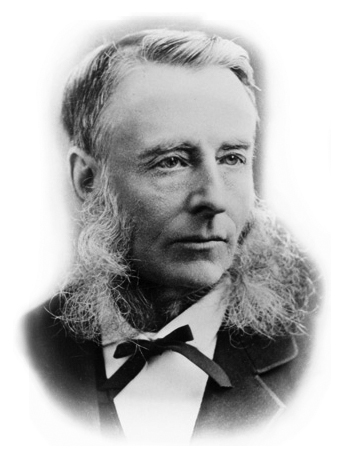
Loss and recovery
The sun rose the next morning over an ice-encrusted ruin.
“The loss the country felt must have been almost unimaginable,” Dr. Bourrie said. “Something central to the soul of Canada was suddenly gone.”
The heroism of the previous night, however, seemed to lend Parliament new resolve. The very next day it was back to business.
The Senate and the House of Commons immediately began holding sittings in makeshift chambers in Ottawa’s Victoria Memorial Museum Building, which now houses the Canadian Museum of Nature. The House, having lost its Mace in the fire, was able to convene when the Senate lent its own.
Though there had been rumours the fire had been deliberately set, a Royal Commission report identified a smouldering cigar or faulty electrical wiring as the likely causes. Weaknesses in the building’s design — tinder-dry panelling, drafty corridors and a lack of fire doors and fire escapes — compounded the destruction.
Within weeks, the government resolved to rebuild. Centre Block would be taller and grander than its predecessor, incorporating the latest fire-prevention technologies. Its interior would be mainly stone rather than wood. Construction was underway by summer.
“They had a dogged determination not to go down. The business of government had to be seen to, and the country’s sense of itself had to be restored,” Dr. Bourrie said.
“That’s why the fire is so important. It’s not just about a building burning down. Symbolically, Centre Block is Parliament.”
